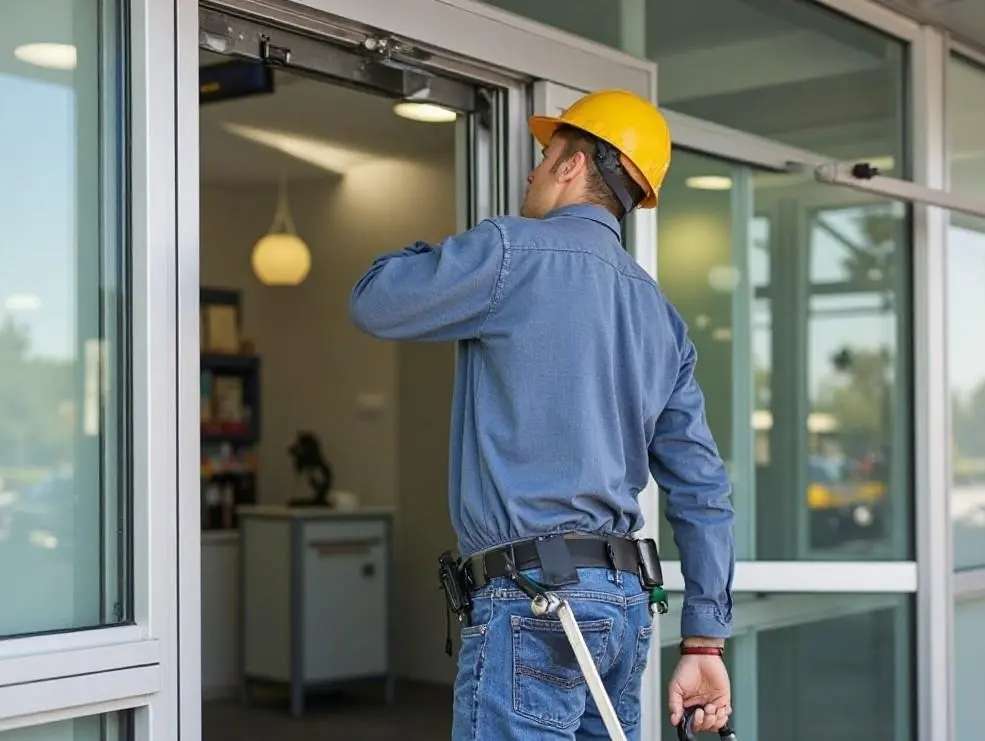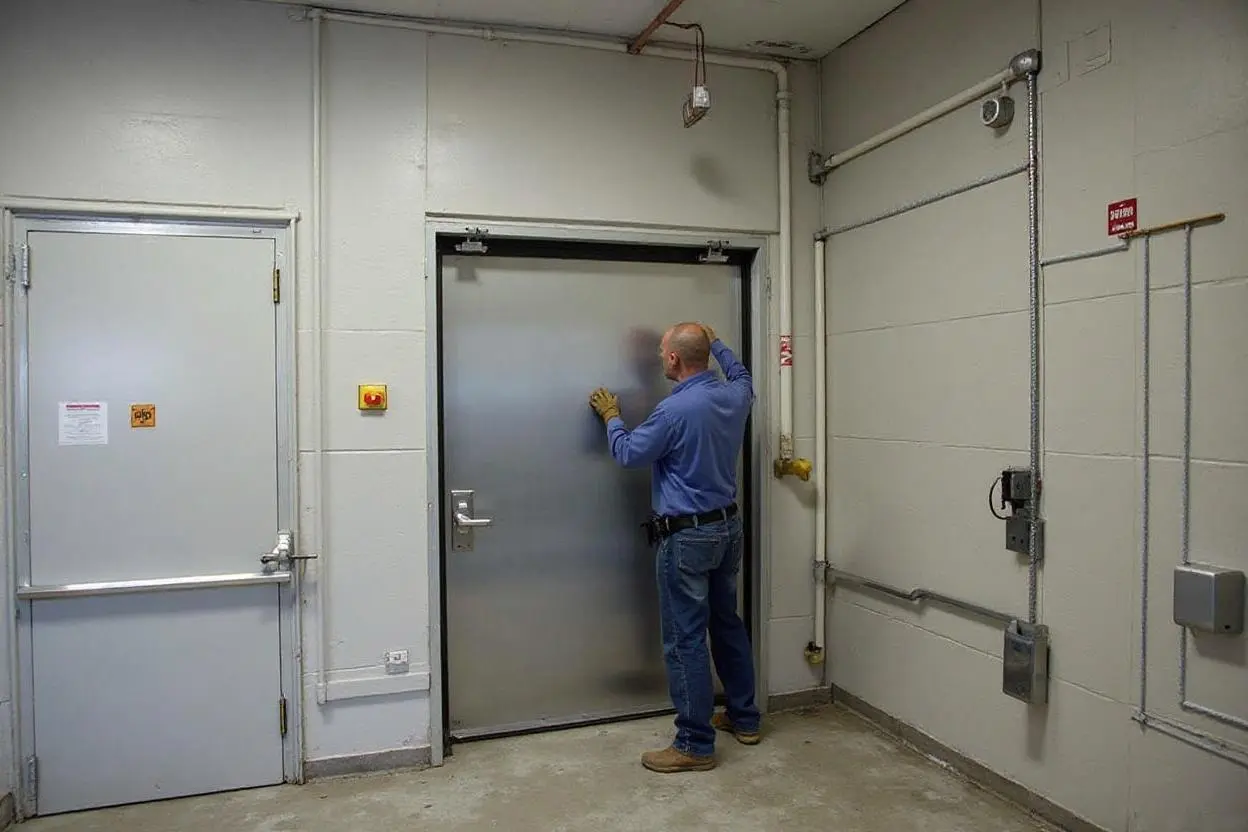What Is The Life Expectancy Of An Automatic Sliding Door?
Building owners often ask how long an automatic sliding door should last before it becomes unreliable or expensive to keep. The honest answer is a range, not a single number, because climate, foot traffic, and maintenance practices shape the lifespan. In Western New York, where lake-effect winters meet humid summers, those sliding door variables matter even more. This article shares practical expectations, costs over time, and specific cues that signal it is time to call for automatic sliding doors repair in Buffalo.
The realistic lifespan: ranges by use and environment
Most commercial-grade automatic sliding doors run reliably for 10 to 20 years. Light-use applications in small offices or clinics may reach the upper end. Busy entrances at grocery stores, hospitals, and transit facilities often land closer to 8 to 12 years before replacement of major assemblies makes sense.
Weather plays a role. In Buffalo, freeze-thaw cycles, road salt, and wind-driven snow stress the threshold, rollers, guide rails, sensors, and seals. Doors that face prevailing winds or open directly to the street see more wear than doors protected by vestibules. With consistent maintenance and correct settings, many systems in the region hit 12 to 15 years without major overhauls.
What actually wears out
It helps to think in assemblies rather than the “whole door.” Operators contain the motor, gearbox, drive belt, and controller. Panels ride on rollers within an aluminum track. Safety and activation sensors monitor the opening. Each has its own service life.
Operators typically run 7 to 12 years before showing fatigue in motors or gearboxes. Belts and rollers are consumables: belts often go 3 to 6 years, while rollers see 5 to 8 years depending on load, dirt, and alignment. Sensors can last a decade, yet false triggers after storms or vibration can shorten that. Weather seals usually need replacement every 3 to 5 years in Buffalo to keep drafts and slush out of the track.

Usage matters more than age
Cycles tell more than calendar years. A medical office might log 200 to 400 cycles per day and run for decades with periodic part swaps. A supermarket can see 2,000 to 4,000 cycles daily, which compresses the timeline. Night mode settings also matter. If doors “hunt” open in wind because sensitivity is too high, the operator works harder and dies sooner. Correct sensor angles and logic settings reduce unnecessary openings.
Maintenance cadence that extends life
A predictable service plan adds years and reduces emergencies. Quarterly checks suit high-traffic sites; semiannual checks fit moderate traffic. During each visit, a technician should clean the track, test safety sensors, verify closing force and speed, adjust belts, inspect rollers and end stops, and confirm the breakout function. In winter, extra attention to salt buildup and ice at the threshold prevents misalignment and trip hazards.
The most common early failure in Buffalo is a worn lower guide or dirty track that causes the panel to drag. Left alone, that strain transfers to the motor and controller. A 30-minute cleaning and adjustment avoids a four-figure operator replacement down the road.
Repair vs. replacement: the tipping point
Repairs make sense when parts are still available and the operator is under 10 to 12 years old. After that, recurring costs, sensor compatibility, and energy waste from poor sealing push the decision toward replacement. Doors installed before current safety standards may also lack features that insurance carriers or facility policies prefer, especially in healthcare or education.
A rough rule: if yearly repairs exceed 15 to 25 percent of the price of a new operator for two years in a row, it is time to plan a replacement. Another trigger is intermittent safety faults that persist after sensor swaps and rewiring. Those point to controller logic boards that may be discontinued.
Energy and comfort: hidden costs of aging doors
Older sliders often lose efficiency. Seals flatten, panels go out of square, and thresholds warp slightly. The result is air leakage, drafts in waiting areas, and higher heating costs. In Buffalo’s winter, a door that sticks 1 inch open can bleed enough warm air to notice on utility bills. Retuning the close force, replacing seals, and aligning the rails often pays for itself within a season.
Safety and compliance keep timelines honest
A door can still move after its safe life has passed. The standard that matters is performance against current safety expectations: correct sensor coverage, consistent stop on obstruction, proper breakout operation, and smooth deceleration. Any safety miss is a reason to call for service the same day. Many retail managers first notice an issue when carts clip the panel or the door “hesitates” at knee height. That is a sensor coverage clue, not operator weakness, and it is fixable.
Common Buffalo-specific issues seen in the field
Snowmelt and salt carry into the track, creating a paste that binds rollers. Wind gusts through Main Street corridors cause doors to open repeatedly if activation sensors point too far out. Plows push berms against exterior sills, freezing panels overnight. Each of these has a straightforward remedy: schedule winter cleanings, adjust sensor angles, and add a modest windbreak or vestibule where possible. A-24 Hour Door National Inc. routinely fields calls after a big lake-effect event and restores smooth operation the same day.
How owners can add years without tools
A building manager can do simple tasks that protect the door and budget.
- Keep the threshold and track free of grit, salt, and ice. A quick sweep at opening and closing helps.
- Watch and listen. New grinding, slow starts, or bounce-back at closing are early warnings.
- Post simple notices during storms. Encourage customers to brush off carts before entry.
- Do not lubricate the track with household oil. It collects dirt. Leave lubrication to the right products during service.
- Test safety once a month using a soft obstacle at shin height and confirm proper stop and reopen.
If any test fails, schedule automatic sliding doors repair in Buffalo before the issue worsens.
Expected lifespan by building type
Retail with heavy carts tends to stress rollers and guides, shortening lifespans to the 8 to 12-year range for operators, with rollers replaced every few years. Healthcare facilities usually maintain doors well and reach 12 to 15 years, yet demand strict safety performance, which may prompt earlier upgrades. Office buildings often see 15 to 20 years from the overall system because traffic is lighter and entrances are sheltered.
Parts availability and brand age
Older operators may run fine, but once a manufacturer sunsets a model, lead times for boards and gearboxes lengthen. That turns a simple fix into a multi-week downtime. Proactive upgrades prevent disruption. A site survey can document model numbers, serials, and part status so managers know where risk exists before peak season.
Costs, broken down simply
Owners often ask for quick numbers. In Buffalo, preventive maintenance visits commonly fall into a modest service fee range per door, with consumables like seals or rollers priced separately. Sensor replacements vary, but single-side activation sensors often land in a moderate price band, while full presence arrays cost more. Operator replacements represent the big ticket and should be considered a 10-plus-year investment. Actual quotes depend on brand, opening width, headers, finishes, and fire or egress requirements. A-24 Hour Door National Inc. provides on-site assessments so budgets match reality, not guesses.
Red flags that signal impending failure
- Door stalls intermittently, then recovers after power cycling.
- Frequent false opens on windy days even after basic cleaning.
- Increased noise from the header, especially a rhythmic thump or belt squeal.
- Panel drift open after closing, suggesting weak hold or misaligned magnet.
- Breakout function feels sticky or uneven.
Any of these merits a prompt service call. Small adjustments today often prevent emergency downtime tomorrow.
Why quick, local service matters in Buffalo
A stuck door during a lake-effect band creates safety and liability risks. Customers gather, drafts chill staff, and heating systems strain. Local technicians know the building stock from Allentown to North Buffalo, Elmwood Village to Cheektowaga, and arrive equipped for common regional failures. That familiarity cuts diagnosis time and repeat visits.
A practical path forward
If the door is under ten years old and shows one or two of the red flags, schedule inspection and repair. If it is over twelve years with recurring service calls, ask for a lifecycle evaluation: operator condition, sensor coverage, track wear, seal integrity, and part availability. From there, decide between a targeted overhaul or a planned replacement during a slow period, not during a snowstorm.
A-24 Hour Door National Inc. services automatic sliding doors across Buffalo, Amherst, Tonawanda, West Seneca, and nearby suburbs. For fast, clear answers and same-day automatic sliding doors repair Buffalo businesses count on, call to book a site visit. The team will assess, quote, and restore smooth, safe operation so staff and customers move without friction.

A-24 Hour Door National Inc provides commercial and residential door repair in Buffalo, NY. Our technicians service and replace a wide range of entry systems, including automatic business doors, hollow metal frames, storefront entrances, fire-rated steel and wood doors, and both sectional and rolling steel garage doors. We’re available 24/7, including holidays, to deliver emergency repairs and keep your property secure. Our service trucks arrive fully stocked with hardware, tools, and replacement parts to minimize downtime and restore safe, reliable access. Whether you need a new door installed or fast repair to get your business back up and running, our team is ready to help. A-24 Hour Door National Inc
344 Sycamore St Phone: (716) 894-2000 Website: https://a24hour.biz/buffalo
Instagram: @a24hourdoor
Buffalo,
NY
14204,
USA
Facebook: 24 Hour Door
Yelp: A-24 Hour Door National (Buffalo)
X (Twitter): @a24hrdoor